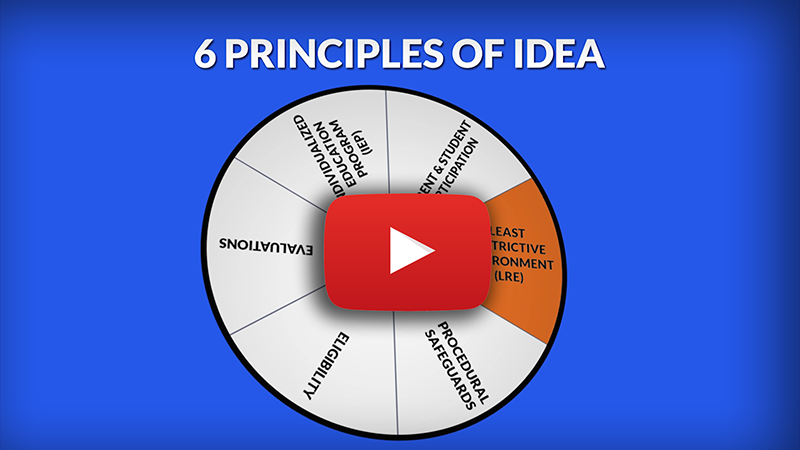6 Principles of IDEA: LRE
SUMMARY
The word “environment” makes LRE sound like a physical location, but it’s actually a term that describes your child’s educational program. Where your child learns is only one piece of the program.
IDEA calls for children with disabilities to be educated with children who are non-disabled to the maximum extent appropriate. This means that children who receive special education should spend as much time as possible with peers who do not receive special education. The law recognizes that "appropriate" is not a one-size-fits-all proposition, and allows for the team to determine which environment will be the most effective for each student.
The term LRE is often used in conjunction with the concept of "inclusion." Inclusion means allowing students with I/DD to participate in the general education classroom and extracurricular activities. The degree to which a student is included in a general education classroom is determined by the IEP team.
Continuum of Placement Options
While IDEA says that students with disabilities should spend, as much time as possible in the general education classroom, it's not a requirement. Instead, the law requires school districts to offer a continuum of placement options to ensure students are not excluded from public education. This continuum goes from the least restrictive option, the regular education classroom, to the most restrictive option, which is home instruction.
The continuum of options can include:
- Regular education classroom: child spends the full day in a regular education classroom with supports and services either in a small group or individual instruction within the classroom.
- Partial regular and special education classroom: child spends part of the day in a regular education class and part in a special education class.
- Special education classroom: child spends most of the day in a specialized program with other disabled students.
- Separate public school: child spends the full day in a specialized program in a separate (no non-disabled peers) public school.
- Separate private school: child spends the full day in a specialized program outside of your school district.
- Separate residential school: the child both goes to school and lives with other children with disabilities
- Hospital and Home Instruction: one-on-one instruction, where the child is separated from all other children
In determining if a placement option is appropriate under IDEA, the following factors are considered:
- The educational benefit to the student from regular education in comparison to the benefits of special education
- The benefit to the disabled student from interacting with typical peers, and
- The degree of disruption of the education of other students resulting in the inability to meet the unique needs of the student with a disability
Related Resources
THE 6 PRINCIPLES OF IDEA
Use the buttons below to navigate to a detail page for each topic.


